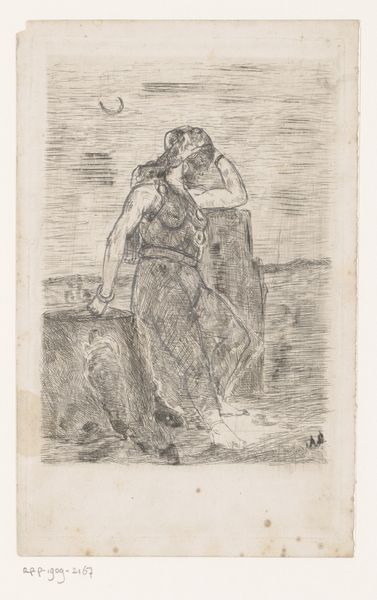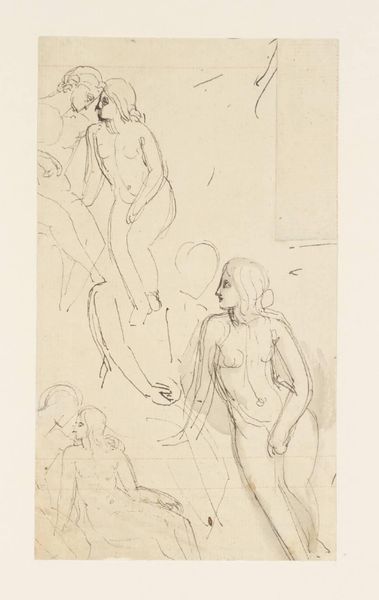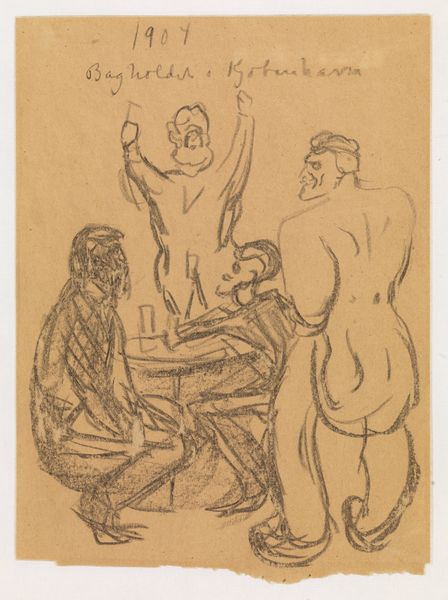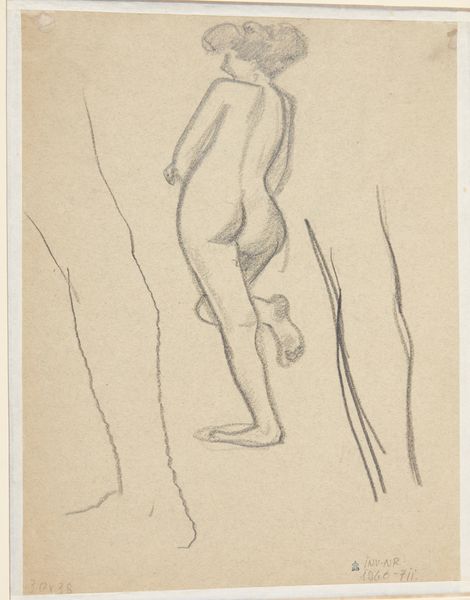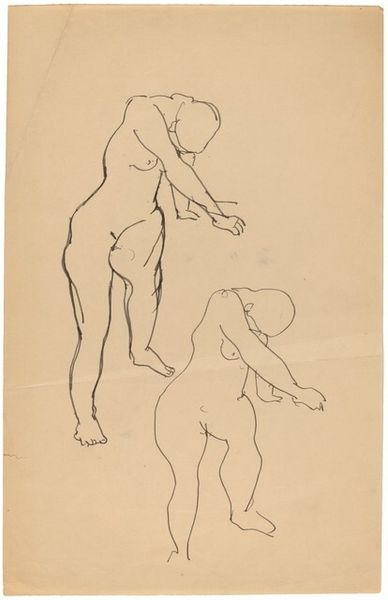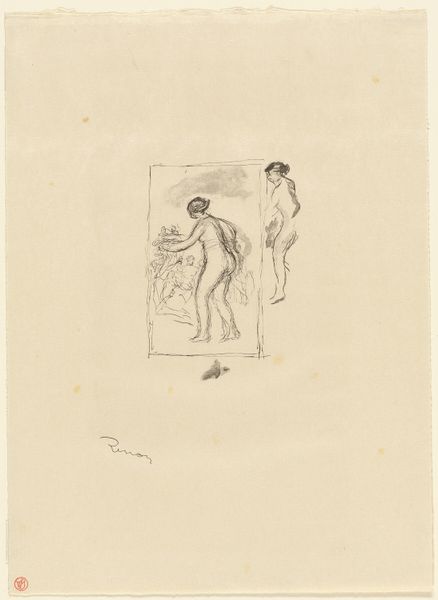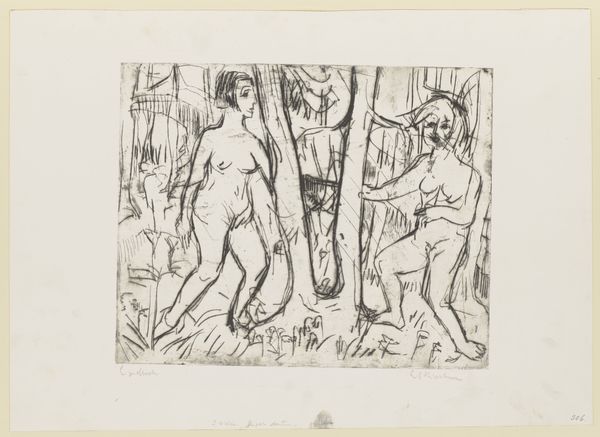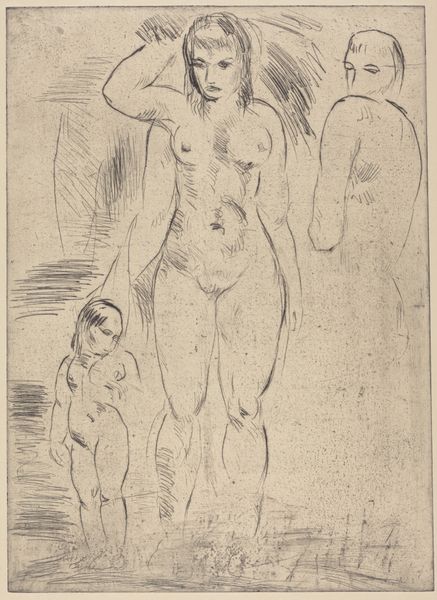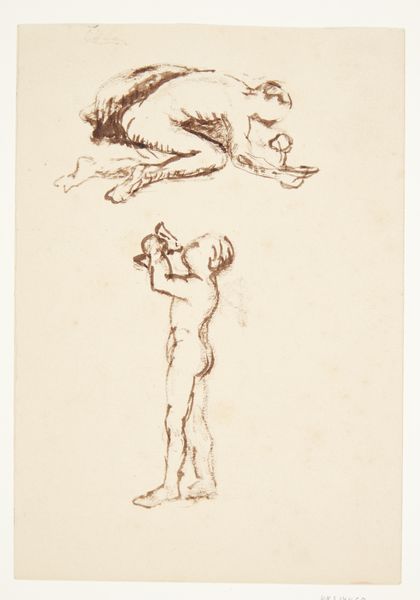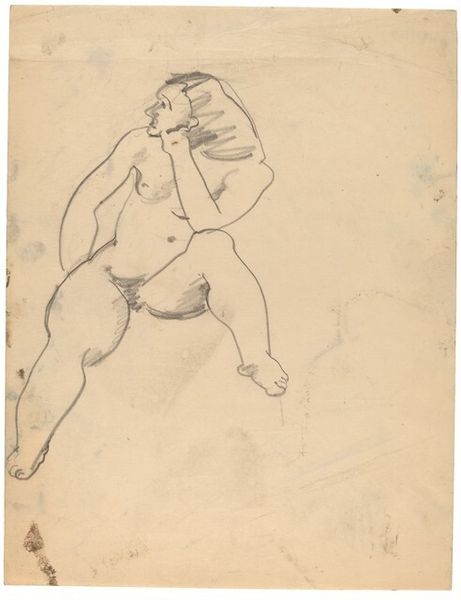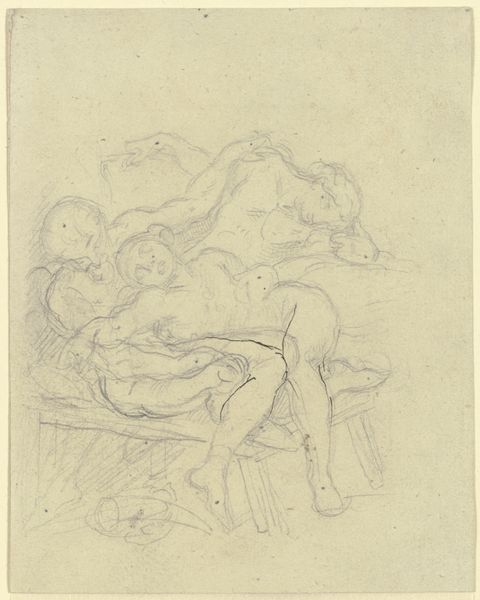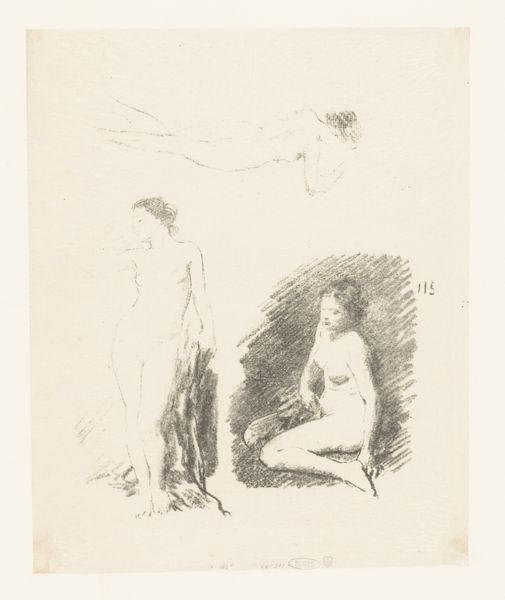
drawing, ink
#
drawing
#
figuration
#
ink
#
expressionism
#
nude
Dimensions: 225 mm (height) x 167 mm (width) (bladmaal)
Curator: Here we have Vilhelm Lundstrom's "Komposition med tre nøgne kvinder," or "Composition with Three Nude Women," created sometime between 1920 and 1923. It's an ink drawing on paper, currently held at the SMK - Statens Museum for Kunst. Editor: It feels… raw. The linework is so frenetic, almost agitated. It evokes a sense of unrest, or perhaps vulnerability. What strikes you about this work from your perspective? Curator: For me, understanding the broader social context is crucial. This was created in the aftermath of World War I, a period of immense social upheaval and changing perceptions of the body. Nudity in art wasn't just about aesthetics; it became a battleground for ideas about identity and the self. The sketch-like style rejects academic traditions. Editor: Absolutely, I agree it reflects that rejection, both artistically and ideologically. Do you think the portrayal of these women pushes against conventional ideas of beauty, and perhaps hints at something more rebellious? It certainly invites analysis through a feminist lens, disrupting classical ideals. Curator: I think the expressive distortions are key to that argument. There’s an undeniable tension between objectification and the figures claiming space and demanding to be seen. And Lundstrom, with the date, positions them deliberately within debates about the “new woman”. Editor: Exactly! That tension between objectification and autonomy feels palpable, adding a complexity that's vital to acknowledging the drawing’s nuanced politics of imagery. This resonates even today in our conversations around the male gaze. But I would argue, going further with the style and material that Lundstrom wanted his audience to question and maybe even reconsider that “new woman." Curator: Definitely a thought-provoking artwork to revisit given our ever-evolving conversations about art and society. It’s interesting how a century later we're still grappling with these themes. Editor: Indeed, it serves as a stark reminder that some struggles for visibility and autonomy still continue, underlining the artwork’s vital place within art history and feminist discourses.
Comments
No comments
Be the first to comment and join the conversation on the ultimate creative platform.

